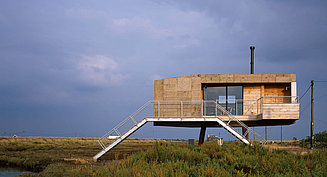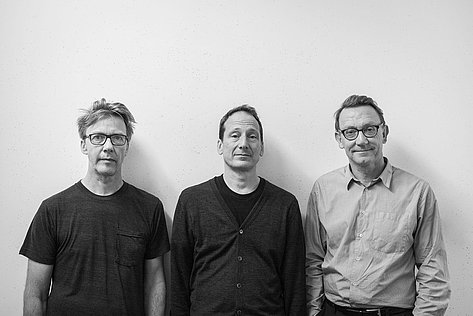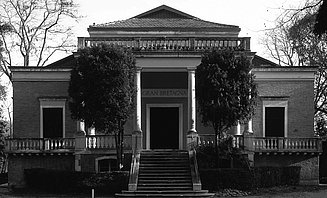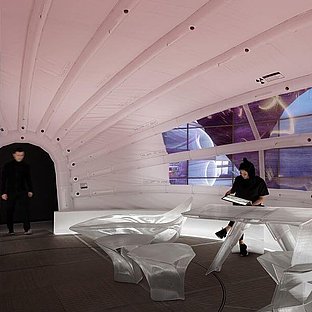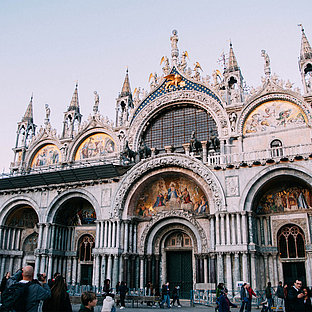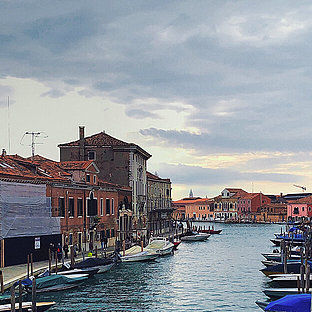Curators of the British Pavilion
3 min readThe proposal was selected by an advisory panel of 7 architecture professionals from the UK, chaired by Sarah Mann, Director of Architecture Design Fashion at the British Council. The thought-provoking proposal, including the quote from Shakespeare, impressed all of them and resulted in a unanimous choice.
A blend of architecture and art
This collaboration between two architects and one artist is bound to result in an intriguing exhibition. The mixed partnership, however, feels natural for both parties.
On the one hand, it is in line with the interest in art, sensitivity to the installation of art and profound expertise within the art world of Caruso St John Architects. They are well-known for their museum and gallery projects, that include public institutions and commercial galleries, as well as work for artists. Their Newport Street Gallery for Damien Hirst won the RIBA Stirling Prize in 2016. Other recent examples in the cultural sector include the Millbank project at Tate Britain, Nottingham Contemporary and the Gagosian Galleries in London, Rome, Paris and Hong Kong.
On the other hand, artist Marcus Taylor regularly works with architects on large scale projects. One stunning example is the Redshank project, which he developed together with Lisa Shell Architects. This beautiful structure, made of cork and cross-laminated timber, stands on 3 metal supports over reclaimed marshland along the coastal waters in Essex. It even incorporates nesting and bat boxes. In 2017, the project received a RIBA East Award and a RIBA East Small Project Award and was nominated for the RIBA House of the Year.
Freespace
This is not the first collaboration between Caruso St John Architects and Marcus Taylor. The curators have recently worked together on a proposal for the UK Holocaust Memorial
in the Victoria Tower Gardens in London. It consists of a cast, translucent sculpture above ground and a series of large chambers below ground. The sculpture brings natural light into the largest and most memorable of these spaces, the ‘Hall of Voices’. The stunning proposal was one of the 10 shortlisted designs. This project would fit perfectly in the ‘Freespace’ theme of the 2018 Architecture Biennale.
La Biennale di Venezia
Caruso St John Architects has already participated in the Architecture Biennale in Venice. In 2010, they presented – together with the German artist Thomas Demand – a full scale fragment of their ‘Nagelhaus’ project for the City of Zurich. In 2012, Caruso St John Architects curated the ‘Pasticcio’ exhibition. They invited a group of seven contemporary European architects from different countries and generations. These exhibitions were not part of the British Pavilion, but of the overall exhibition in the central pavilion in Giardini. Marcus Taylor has never participated in the Biennale. His work has been exhibited in the UK and abroad, among other places in the Saatchi Gallery and the British Art Show. His work has been collected by several major institutions including the Tate, Fondation Cartier and private collectors. The British Pavilion in Giardini was opened at the 8th Art Biennale in 1909. The building originally housed the café and restaurant of La Biennale. It was redesigned by Edwin Alfred Rickards, a representative of British Edwardian classicism, with the support of William Frank Brangwyn for the interior. In this beautiful setting, Caruso St John Architects and Marcus Taylor follow in the curatorial footsteps of Shumi Bose, Jack Self and Finn Williams (HomeEconomics, 2016) and Sam Jacob and Wouter Vanstiphout (A Clockwork Jerusalem, 2014).
